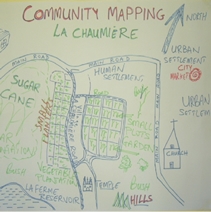CSDi Online Lite
OL 341—Community Based Adaptation to Climate Change
This week, we continue posting samples of our light version of our most popular course. This will allow you to have a little background on what students are posting on our Facebook page, and at our Development Community. Just click on the two links below.
Week 2: What’s your Theory of a Solution?
OL 341 Assignment Two CBA Discussion
Magee Example Project OL 341 Assignment Two
| Developing a theory of how you plan to solve the problem developed last week. | |
 |
You concluded Assignment One with a set of community identified problems organized into a unique project outline. You also wrote a short and concise description of the overall problem. Now is your opportunity to develop a theory of how to solve this problem, and to begin exploring specific project activities that will fulfill your theory. |
The Lite Version
Each week, running in parallel with the course, I will be posting a discussion sheet about community-based adaptation, and an example of the week’s homework. This is simply to give you the opportunity of seeing what these courses are like from the student’s perspective & also give you an opportunity to better understand what the students are discussing that week.
This is called the Lite Version, because the full course has a collection of online student resources, expanded discussions about that week’s assignment, and, of course, it has the course leader who works with students in reviewing their assignments and in making suggestions for their projects.
Is providing this information helpful to you? Please let us know your thoughts!
Be sure to visit the CSDi’s Development Community. Join 450 colleagues in sharing resources & collaborating online.
Like us: CSDi Facebook.
Learn how to develop a community centered, impact oriented project.


